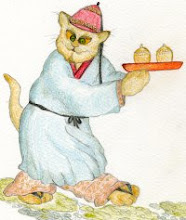The recent Khizr Khan mystery is unlikely to be resolved. The
Virginia lawyer, who at the Democratic National Convention famously
offered to send Trump his copy of the United States Constitution, was
obliged to cancel an anti-fascist speaking engagement in Canada. The
news reports conflict with each other, but the justification widely
ascribed to Khan is that the U.S. government put his travel documents
under review. Since so irregular a measure cannot realistically have
been carried out, the real motive lies in the darkness behind. One
might perhaps think in terms of intimidation.
Under fascism, every expression of criticism is affected by the
possibility of retaliation through intimidation. We are in a
pre-fascist situation, and a current phenomenon is the confrontation
of the strong-arm threat simply by calling it out. While Khan may
(as we suppose) set a valuable example of caution in the face of
perceived danger, others judge that their best course is to offer
provocation quite openly. This approach can only be effective if the
provocation is wholly legitimate, for in the current circumstances
the forces of fascism fear damage that legitimate opposition can
inflict against them.
In Arizona, a billboard has been erected showing a shoulder-length
photo of Trump, with large swastikas cleverly transformed into dollar
signs on either side, and nuclear explosions occurring behind. The
owner-artist, who has received threats, indicates that the billboard
will remain standing for the duration of the Trump presidency. This
is an extraordinary artistic statement. It concedes the transitory
nature of the original physical medium, although the work can survive
both through photography and through descriptions such as the present
one. The artistic content includes protest, admonition, and
appraisal. It is “big” art, yet through an extraordinary economy
of expression it rejects the bombast of that genre. The variable of
intimidation is peculiar to American art in the current situation,
but the other themes, in particular the transitory nature of art
using Trump as subject, emerge just as clearly in other countries.
A similar piece from the technical standpoint is now found in
Vilnius. A mural shows Trump and Putin exchanging something more than
the stylized European diplomatic kiss. The figures are superbly
presented in Jugendstil. Clearly this work comments on the ongoing
disclosures of Trump’s secret collaboration with the Russians both
before and after his election, and on the threat that such secret
ties may hold for Lithuania and the other Baltic states. The artist
and the café owner whose wall the mural now adorns sit in front of
it for the photographer, exchanging what is presented as a lovers’
kiss, as in, one imagines, many similar incongruous scenes before
this in European history. Again the photograph stands as the
permanent record, since the mural itself cannot realistically
survive, being too disturbing and distasteful and of too little
utility.
The theme of ephemeral existence is exploited in a British piece
of more modest dimensions. A Marlboro cigarette pack is given a hasty
makeover. The Marlboro name is obliterated by expanding the red area
of the packet, and a rough likeness of Trump emerges. A slightly
altered health warning, “harms you and others around you,” comes
sharply into focus. Here obviously is the message of rapid
transformation to achieve art, and the admission – even hope –
that the art will not physically survive, unless through photography
and description. The theme of admonition is there: will the subject
itself disappear, or will “reality as we know it” disappear
instead? Heed the warning on the pack.
Returning once more to “big” art, our final piece for
commentary is not art per se, since artistic purpose has no role in
its creation. But no, that is not entirely the case. The scene is
real and is shown in a photograph taken primarily to capture the
“art” that exists within it. In Mumbai, an ordinary street with
homeless sleeping on cardboard, and above them a billboard showing
Trump sitting forward on a comfortable armchair in a luxurious
setting, with the caption: “There is only one way to live. The
Trump way.” It is an advertisement for a new Trump Tower hotel in
Mumbai. The juxtaposition involves the grinding poverty of the
street, the opulence of international business, and the persona of
Trump as the messiah of self-interest. The artistic message is a
causal one: the self-interest of a few often results in dire
circumstances for many. Here the threat of intimidation is the
customary one: the photographer risks ridicule that is commonly
heaped on those promoting social progress, yet the scene is so
poignant and rich with symbolic meaning that such ridicule can only
backfire.
In each of these instances the art is a creation (or in the Mumbai
case an inadvertent creation) that is intended to be transitory, but
to which permanence is afforded through photography and possibly also
through description. We have entered an age where “a picture paints
a thousand words,” where very simple juxtapositions reach to the
essence of the ailment. The creations even foresee their own passing.
Yet the current situation is also deemed to be rapidly transforming –
necessarily, in view of its appalling incongruity.
News articles discussing these works can be found here:
Arizona billboard
Vilnius mural
Marlboro packet
Mumbai street scene
[This post represents the first installment of Part Four, where the goal will be to shed light on the intersection between culture and ongoing history.]
skip to main |
skip to sidebar
The Circuit
Views of what history is, or isn't. In pursuit of historical method and philosophy of history.
About Me
So the sea cast it out upon the shore, and the shore cast it back into the sea, and at last the waves hurled it high into the air in anger; and it hung there long without a grave, till it was changed into a desolate rock, which stands there in the surge until this day. – KINGSLEY, The Heroes, 239.
